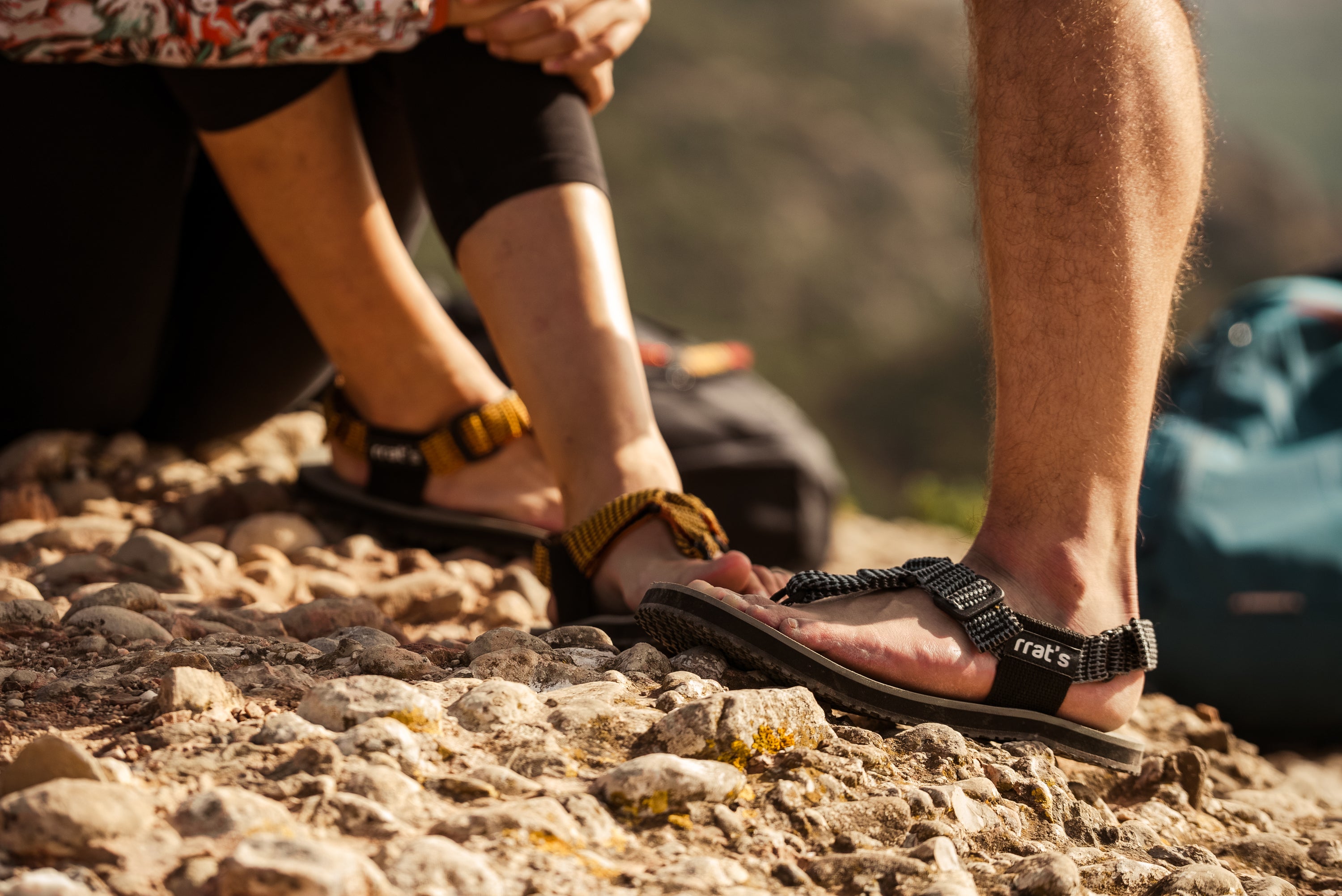As good sports lovers, at RRAT's we adore walks in the mountains, forests, or anywhere we can enjoy good views and nature. That is why we know how important it is to prepare well before engaging in any physical activity, especially when hiking outdoors. At RRAT's , we want you to enjoy your walk to the fullest, so we have prepared a series of tips on preparing physically for a long-distance hike.
Get ready for the walk
Each person is different, so physical performance is different for each individual. If you are not used to physical activity or have low performance, the best thing you can do is start getting your body used to it. As? The best thing to do is take daily short-distance walks to improve resistance and get used to physical exercise.
On the other hand, good cardiovascular training is vital to avoid feeling fatigued and increase resistance to possible injuries. Likewise, balancing and flexibility exercises will help us improve ankle and knee stability while reducing injuries caused by inflexible and tense muscles.
Warm up and cool down appropriate for exercise
Before taking a walk, it is essential to warm up to prepare the muscles and joints and improve blood circulation, avoiding future injuries.
But why can I get injured if I don't do warm-up exercises? When we are at rest, without doing physical activity, the muscles are cold and stiff so this stiffness can cause tissue damage.
Here are some examples of a good warm-up of the main parts of the body, such as the neck, back, arms, and legs:
Neck
- Tilt your head slightly to the right and cross your right hand over your head so that you can touch your ear.
- Lightly press the hand that you have crossed against your head until you feel a slight tug on the left side of your neck.
- Hold the position for 15 seconds and switch sides.
Back
- Get on your knees and rest your buttocks on your heels.
- Lean forward keeping your buttocks on your heels and stretch your arms out in front of you as far as you can.
- Hold the position for 10 seconds and repeat it three times.
Arms
- Stretch your right arm forward without bending the elbow.
- With the other hand, pull the fingers of the right hand down.
- Hold the position for 15 seconds and switch arms.
Legs
- Open your legs to the width of your hips and slightly bend your knees.
- Grab the right heel with your hand and bring it to the buttock.
- Hold the position for 15 seconds and switch legs.
On the other hand, when you finish the walk, it is necessary to cool down the body, so it is advisable not to stop suddenly but to lower the intensity gradually.
Hydration and nutrition, two fundamental elements
During intense physical activity, between 1.5 and 3.5 liters of fluids can be lost per hour through sweat. Although we all know hydration is essential during exercise, the Higher Sports Council recommends drinking around half a liter of liquid one or two hours before physical activity for better performance.
In addition, during exercise, it is also advisable to hydrate every 15/20 minutes in small sips. Once the activity has finished, rehydration is essential since that is when the body needs to recover from the hiking or exercise route.
We all know that water is a great ally, but so are isotonic drinks since we can replace the loss of electrolytes, particles that help balance bodily fluids. If there is not enough sodium, chlorine, or potassium, we can have symptoms of weakness, listlessness, and muscle cramps. So alternating water and isotonic drinks is an excellent option.
If we talk about food, eating something light and rich in carbohydrates before exercise is convenient, leaving enough time for proper digestion. For long-distance walks, eating a healthy, carbohydrate-rich snack for extra energy is recommended. Some foods you can eat are energy bars, yogurt, fresh fruit, or crackers.
A good diet is also recommended for adequate recovery, just as good hydration at the end of the exercise. In this case, the best foods will be those that contain carbohydrates or proteins, such as turkey, fruit, or chocolate milk.
Bet on RRat's, comfortable and safe footwear
According to experts, you have to stop to rest for five minutes every hour or two of walking and, during this break, take off your shoes and put your feet up to prevent them from swelling.
The swelling is often caused to some extent by the footwear used since wearing socks and shoes that oppress your feet all day can cause them to swell and marks to appear.
At RRAT's we know how uncomfortable and annoying it is not to be able to enjoy an incredible walk because of wearing the wrong shoes. That is why we have designed "all-terrain" mountain sandals, where you can walk in the mountains, practice water sports, and much more. Its wide and flexible last allows your feet to relax and be free on all your adventures without losing protection and safety, thanks to its sole being specially designed for the most challenging terrain.
The RRAT's Y-Mountain and the RRAT's Y-Gravel, are made with sustainable and environmentally friendly materials. Ideal for nature lovers!
Climb mountains, take walks on trails, or dip in the river without taking off your new adventure companions. Join the sport sandal revolution, join RRAT's.


